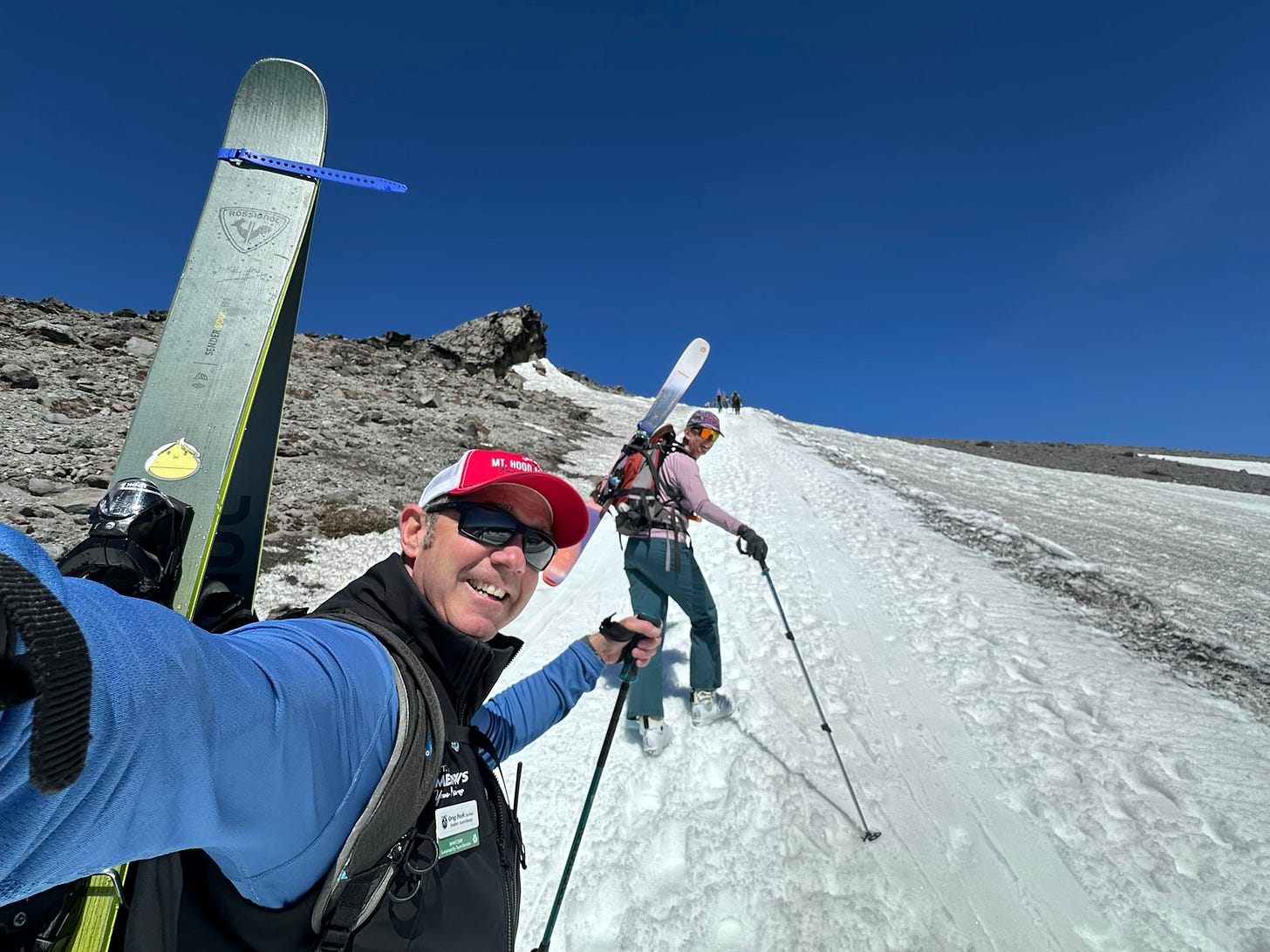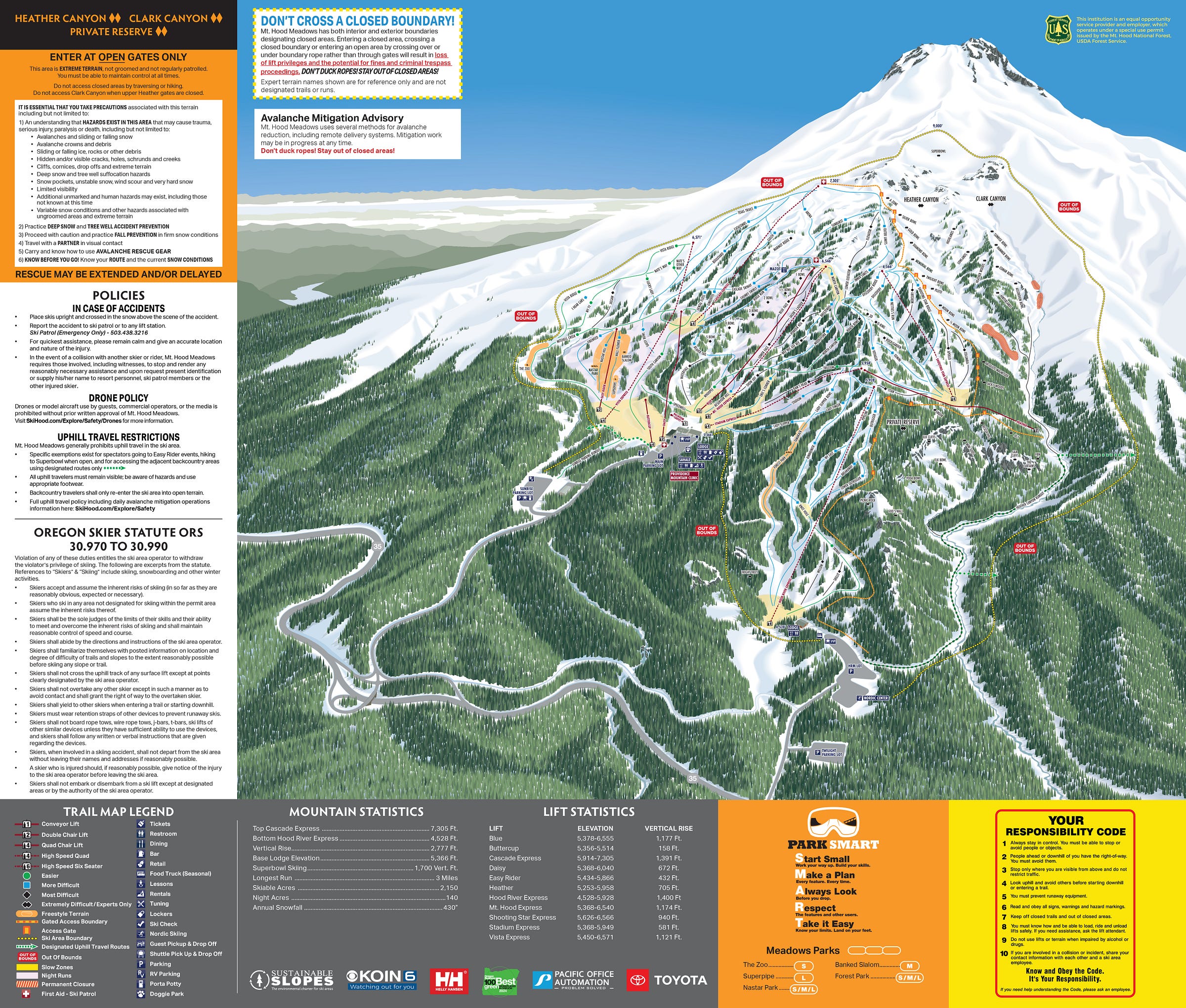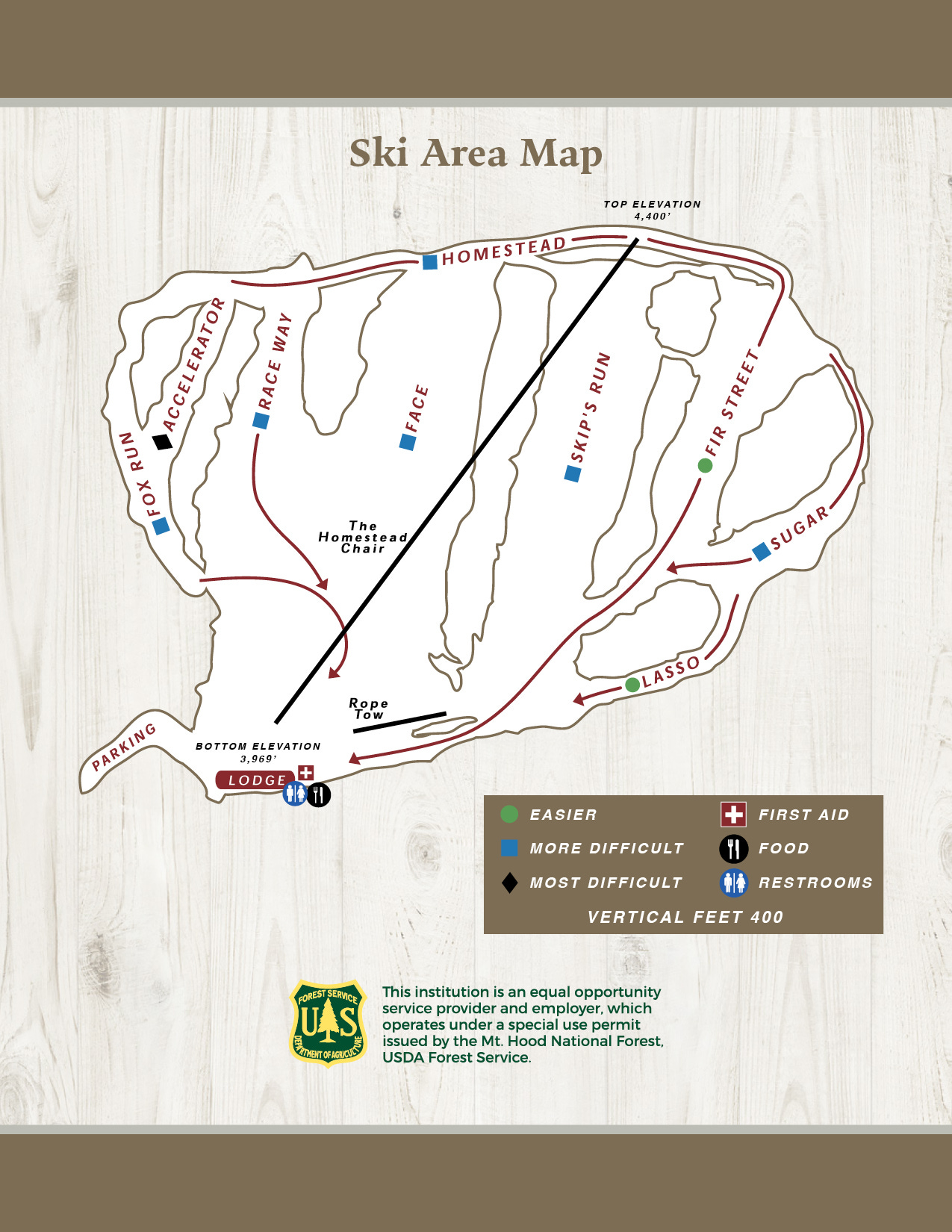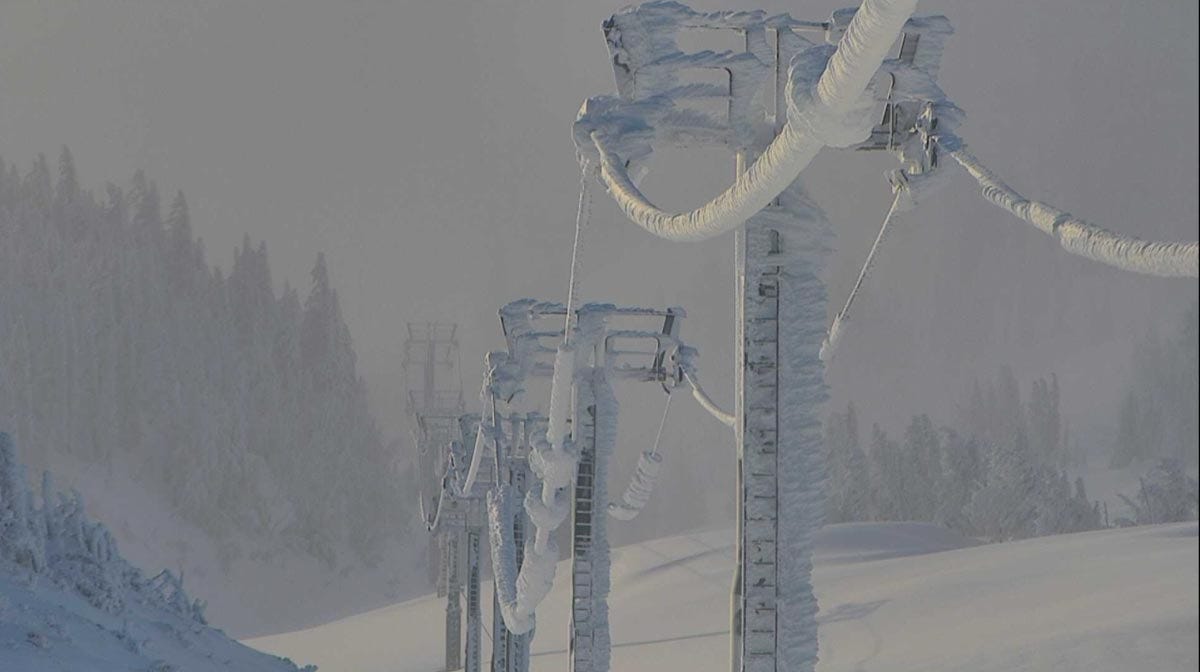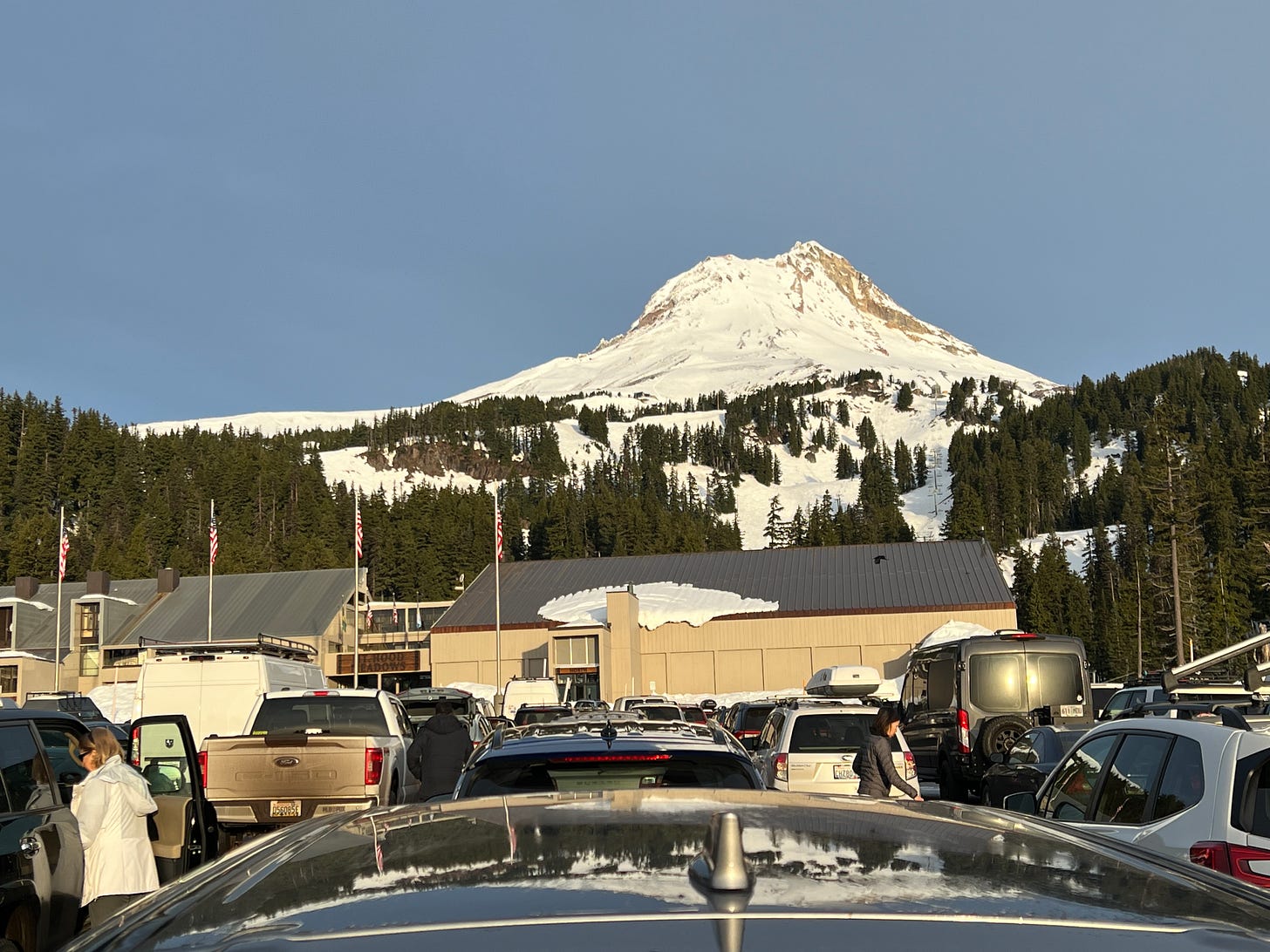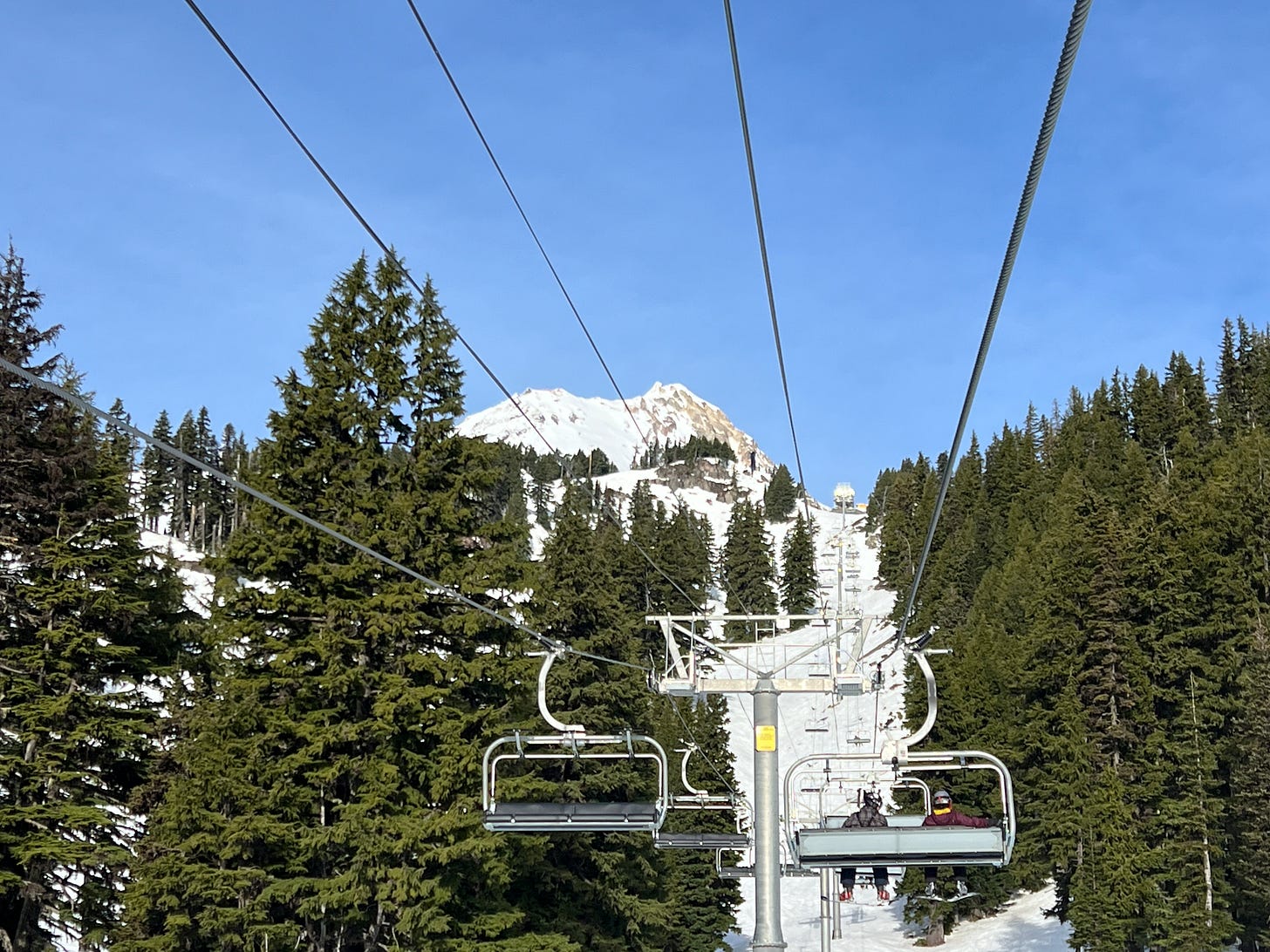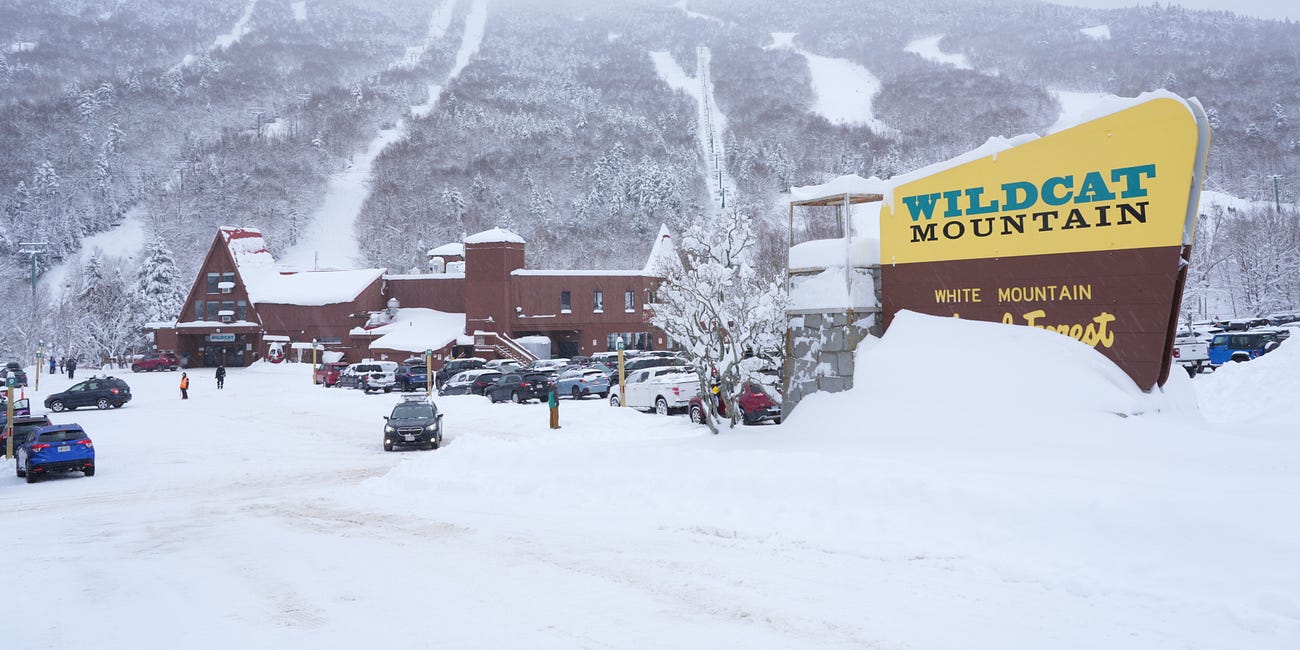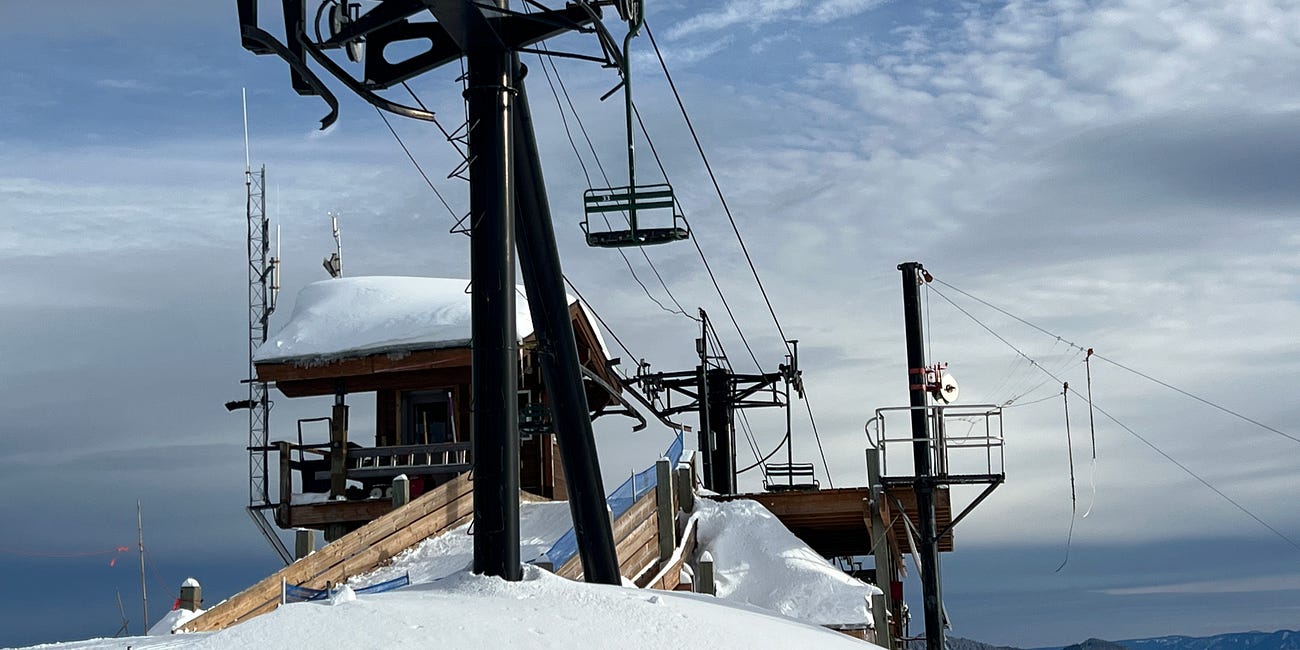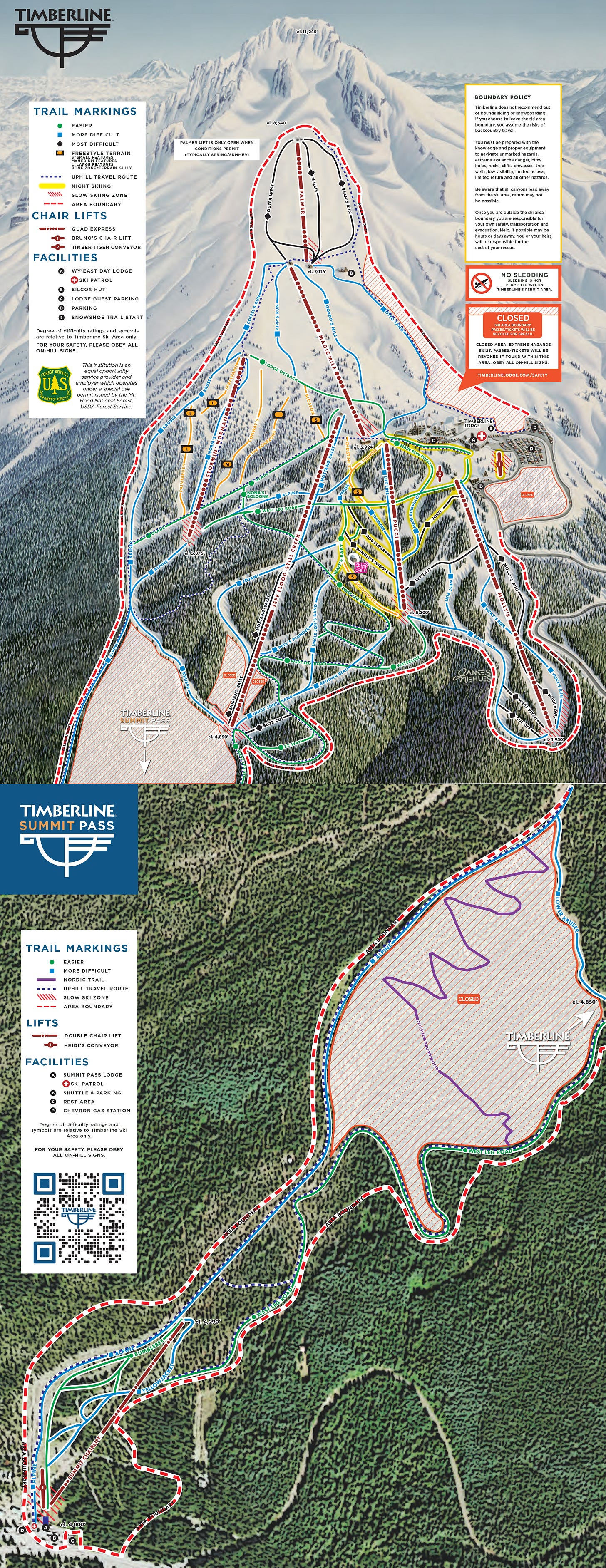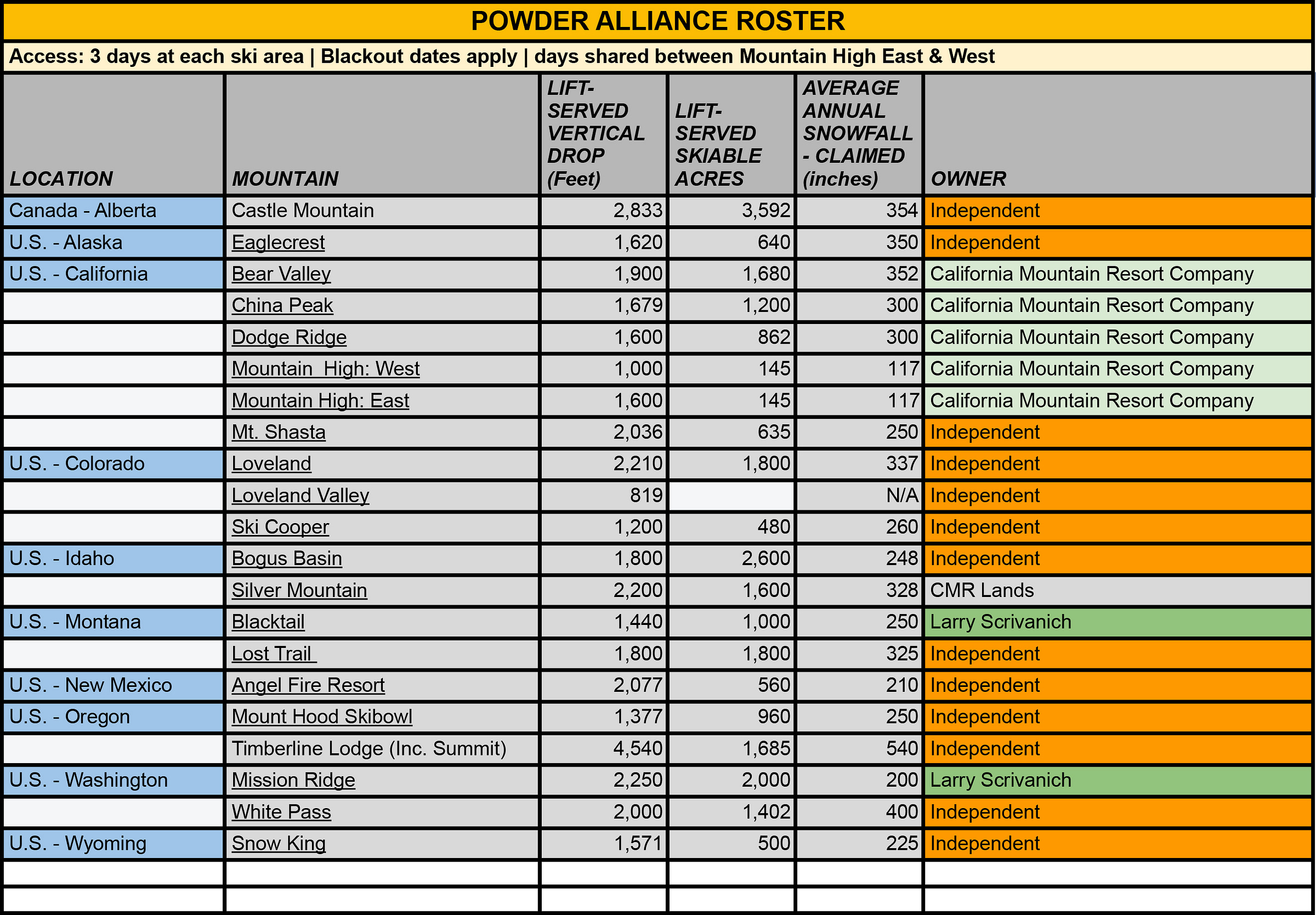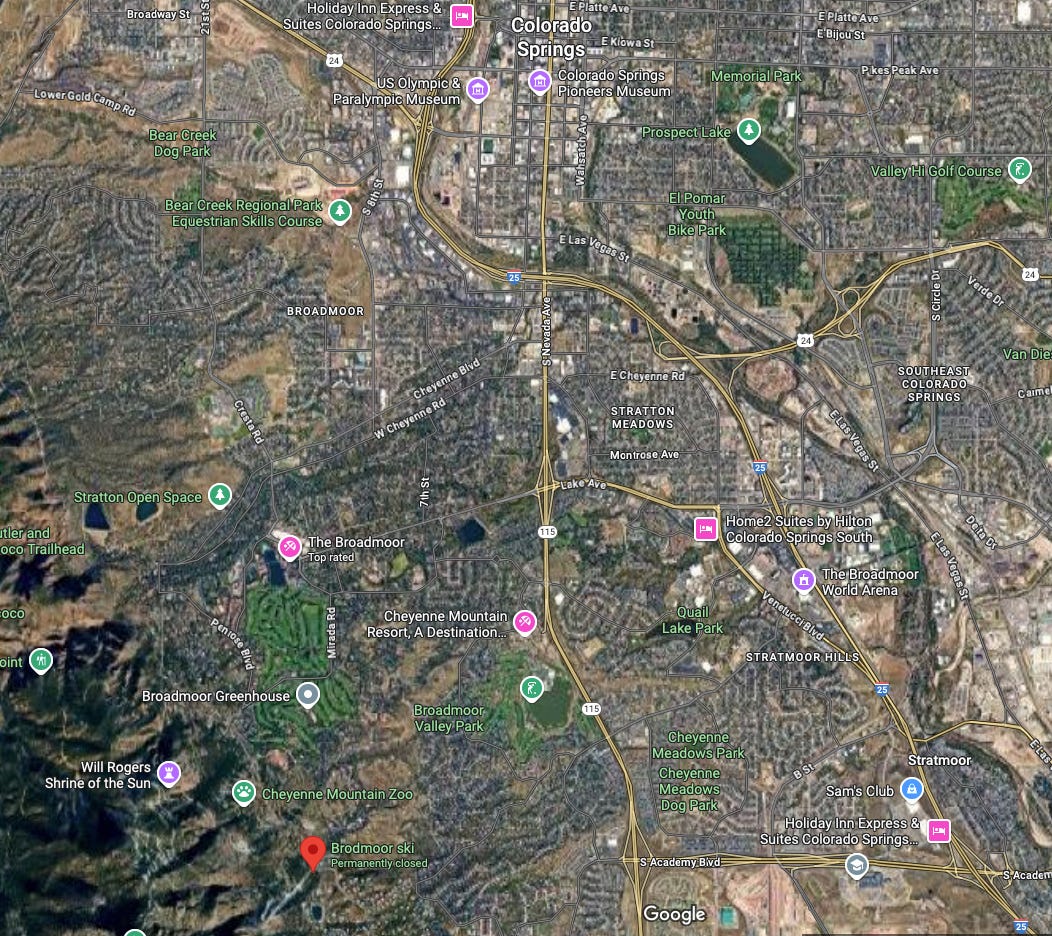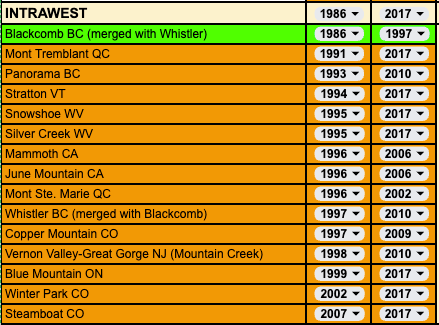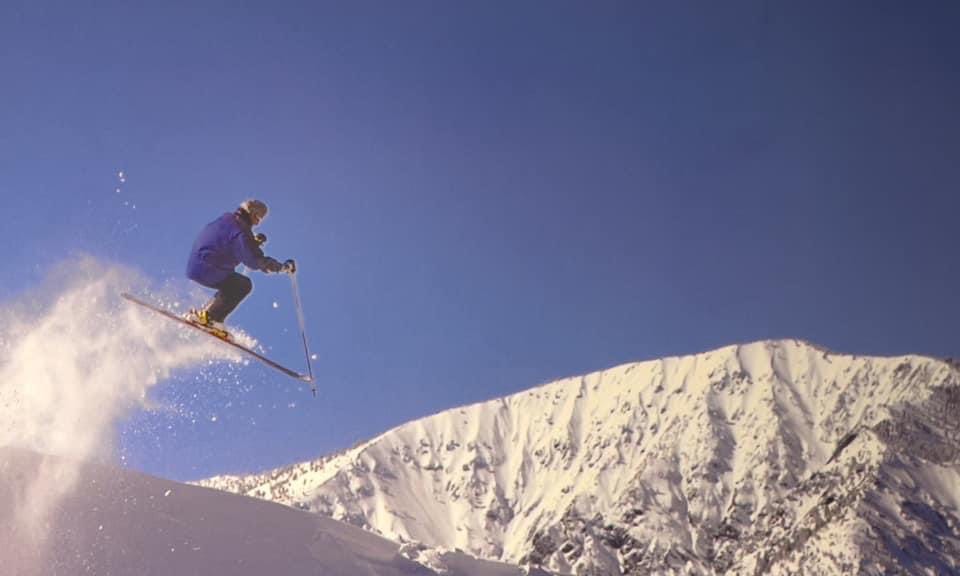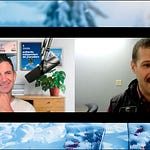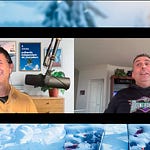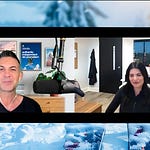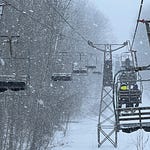Who
Greg Pack, President and General Manager of Mt. Hood Meadows, Oregon
Recorded on
April 28, 2025
About Mt. Hood Meadows
Click here for a mountain stats overview
Owned by: The Drake Family (and other minority shareholders)
Located in: Mt. Hood, Oregon
Year founded: 1968
Pass affiliations:
Indy Pass – 2 days, select blackouts
Indy+ Pass – 2 days, no blackouts
Closest neighboring U.S. ski areas: Summit (:17), Mt. Hood Skibowl (:19), Cooper Spur (:23), Timberline (:26)
Base elevation: 4,528 feet
Summit elevation: 7,305 feet at top of Cascade Express; 9,000 feet at top of hike-to permit area; 11,249 feet at summit of Mount Hood
Vertical drop: 2,777 feet lift-served; 4,472 hike-to inbounds; 6,721 feet from Mount Hood summit
Skiable acres: 2,150
Average annual snowfall: 430 inches
Trail count: 87 (15% beginner, 40% intermediate, 15% advanced, 30% expert)
Lift count: 11 (1 six-pack, 5 high-speed quads, 1 fixed-grip quad, 3 doubles, 1 carpet – view Lift Blog’s inventory of Mount Hood Meadows’ lift fleet)
About Cooper Spur
Click here for a mountain stats overview
Owned by: The Drake Family
Located in: Mt. Hood, Oregon
Year founded: 1927
Pass affiliations: Indy Pass, Indy+ Pass – 2 days, no blackouts
Closest neighboring U.S. ski areas: Mt. Hood Meadows (:22), Summit (:29), Mt. Hood Skibowl (:30), Timberline (:37)
Base elevation: 3,969 feet
Summit elevation: 4,400 feet
Vertical drop: 431 feet
Skiable acres: 50
Average annual snowfall: 250 inches
Trail count: 9 (1 most difficult, 7 more difficult, 1 easier)
Lift count: 2 (1 double, 1 ropetow – view Lift Blog’s inventory of Cooper Spur’s lift fleet)
Why I interviewed him
Volcanoes are weird. Oh look, an exploding mountain. Because that seems reasonable. Volcanoes sound like something imagined, like dragons or teleportation or dinosaurs*. “So let me get this straight,” I imagine some puzzled Appalachian miner, circa 1852, responding to the fellow across the fire as he tells of his adventures in the Oregon Territory, “you expect me to believe that out thataways they got themselves mountains that just blow their roofs off whenever they feel like it, and shoot off fire and rocks and gas for 50 mile or more, and no one never knows when it’s a’comin’? You must think I’m dumber’n that there tree stump.”
Turns out volcanoes are real. How humanity survived past day one I have no idea. But here we are, skiing on volcanoes instead of tossing our virgins from the rim as a way of asking the nice mountain to please not explode (seriously how did anyone make it out of the past alive?).
And one of the volcanoes we can ski on is Mount Hood. This actually seems more unbelievable to me than the concept of a vengeful nuclear mountain. PNW Nature Bros shield every blade of grass like they’re guarding Fort Knox. When, in 2014, federal scientists proposed installing four monitoring stations on Hood, which the U.S. Geological Survey ranks as the sixth-highest threat to erupt out of America’s 161 active volcanoes, these morons stalled the process for six years. “I think it is so important to have places like that where we can just step back, out of respect and humility, and appreciate nature for what it is,” a Wilderness Watch official told The New York Times. Personally I think it’s so important to install basic monitoring infrastructure so that thousands of people are not incinerated in a predictable volcanic eruption. While “Japan, Iceland and Chile smother their high-threat volcanoes in scientific instruments,” The Times wrote, American Granola Bros say things like, “This is more proof that the Forest Service has abandoned any pretense of administering wilderness as per the letter or spirit of the Wilderness Act.” And Hood and the nation’s other volcanoes cackle madly. “These idiots are dumber than the human-sacrifice people,” they say just before belching up an ash cloud that could take down a 747. When officials finally installed these instrument clusters on Hood in 2020, they occupied three boxes that look to be approximately the size of a convenience-store ice freezer, which feels like an acceptable trade-off to mass death and airplanes falling out of the sky.
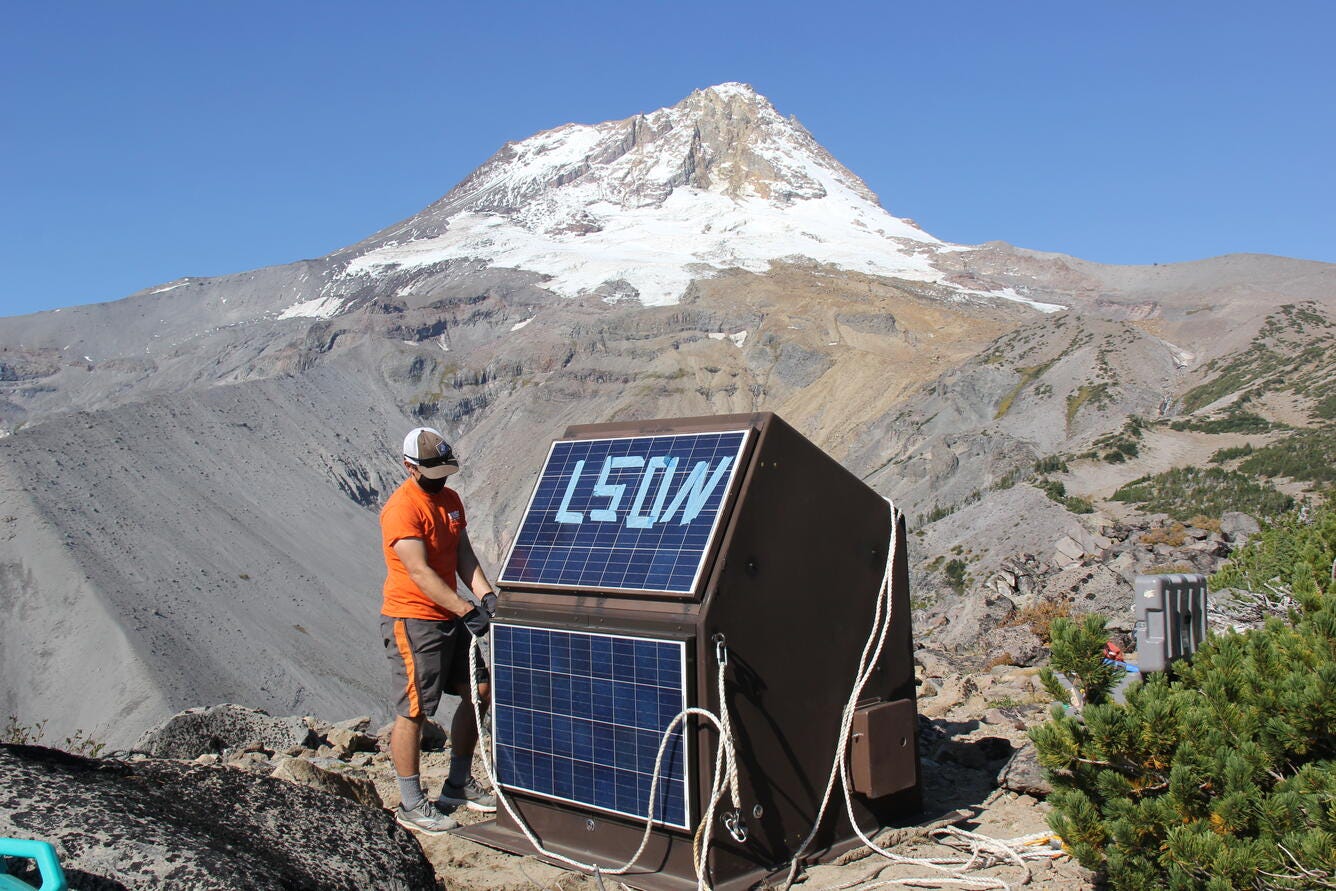
I know that as an outdoor writer I’m supposed to be all pissed off if anyone anywhere suggests any use of even a centimeter of undeveloped land other than giving it back to the deer in a treaty printed on recycled Styrofoam and signed with human blood to symbolize the life we’ve looted from nature by commandeering 108 square feet to potentially protect millions of lives from volcanic eruption, but this sort of trivial protectionism and willful denial that humans ought to have rights too is the kind of brainless uncompromising overreach that I fear will one day lead to a massive over-correction at the other extreme, in which a federal government exhausted with never being able to do anything strips away or massively dilutes land protections that allow anyone to do anything they can afford. And that’s when we get Monster Pete’s Arctic Dune Buggies setting up a casino/coal mine/rhinoceros-hunting ranch on the Eliot Glacier and it’s like thanks Bros I hope that was worth it to stall the placement of gardenshed-sized public safety infrastructure for six years.
Anyway, given the trouble U.S. officials have with installing necessary things on Mount Hood, it’s incredible how many unnecessary ones our ancestors were able to build. But in 1927 the good old boys hacked their way into the wilderness and said, “by gum what a spot for snoskiing” and built a bunch of ski areas. And today 31 lifts serve four Mt. Hood ski areas covering a combined 4,845 acres:

Which I’m just like, do these Wilderness Watch people not know about this? Perhaps if this and similar groups truly cared about the environmental integrity of Mount Hood they would invest their time, energy, and attention into a long-term regional infrastructure plan that identified parcels for concentrated mixed-use development and non-personal-car-based transit options to mitigate the impact of thousands of skiers traveling up the mountain daily from Portland, rather than in delaying the installation of basic monitoring equipment that notifies humanity of a civilization-shattering volcanic eruption before it happens. But then again I am probably not considering how this would impact the integrity of squirrel poop decomposition below 6,000 feet and the concomitant impacts on pinestand soil erosion which of course would basically end life as we know it on planet Earth.
OK this went sideways let me try to salvage it.
*Whoops I know dinosaurs were real; I meant to write “the moon landing.” How embarrassing.
What we talked about
A strong 2024-25; recruiting employees in mountains with little nearby housing; why Meadows doesn’t compete with Timberline for summer skiing; bye-bye Blue double, Meadows’ last standing opening-year chairlift; what it takes to keep an old Riblet operating; the reliability of old versus new chairlifts; Blue’s slow-motion demolition and which relics might remain long term; the logic of getting a free anytime buddy lift ticket with your season pass; thoughts on ski area software providers that take a percentage of all sales; why Meadows and Cooper Spur have no pass reciprocity; the ongoing Cooper Spur land exchange; the value of Cooper Spur and Summit on a volcano with three large ski areas; why Meadows hasn’t backed away from reciprocal agreements; why Meadows chose Indy over Epic, Ikon, or Mountain Collective; becoming a ski kid when you’re not from a ski family; landing at Mountain Creek, New Jersey after a Colorado ski career; how Moonlight Basin started as an independent ski area and eventually became part of Big Sky; the tension underlying Telluride; how the Drake Family, who has managed the ski area since inception, makes decisions; a board that reinvests 100 percent of earnings back into the mountain; why we need large independents in a consolidating world; being independent is “our badge of honor”; whether ownership wants to remain independent long term; potential next lift upgrades; a potential all-new lift line and small expansion; thoughts on a better Heather lift; wild Hood weather and the upper limits of lift service; considering surface lifts on the upper mountain; the challenges of running Cascade Express; the future of the Daisy and Easy Rider doubles; more potential future expansion; and whether we could ever see a ski connection with Timberline Lodge.
Why now was a good time for this interview
It’s kind of dumb that 210 episodes into this podcast I’ve only recorded one Oregon ep: Timberline Lodge President Jeff Kohnstamm, more than three years ago. While Oregon only has 11 active ski areas, and the state ranks 11th-ish in skier visits, it’s an important ski state. PNW skiers treat skiing like the Northeast treats baseball or the Midwest treats football or D.C. treats politics: rabid beyond reason. That explains the eight Idaho pods and half dozen each in Washington and B.C. These episodes hit like a hash stand at a Dead show. So why so few Oregon eps?
Eh, no reason in particular. There isn’t a ski area in North America that I don’t want to feature on the podcast, but I can’t just order them online like a pizza. Relationships, more than anything, drive the podcast, and The Storm’s schedule is primarily opportunity driven. I invite folks on as I meet them or when they do something cool. And sometimes we can connect right away and sometimes it takes months or even years, even if they want to do it. Sometimes we’re waiting on contracts or approvals so we can discuss some big project in depth. It can take time to build trust, or to convince a non-podcast person that they have a great story to tell.
So we finally get to Meadows. Not to be It-Must-Be-Nice Bro about benefits that arise from clear deliberate life choices, but It must be nice to live in the PNW, where every city sits within 90 minutes of a ripping, open-until-Memorial-Day skyscraper that gets carpet bombed with 400 annual inches but receives between one and four out-of-state visitors per winter. Yeah the ski areas are busy anyway because they don’t have enough of them, but busy with Subaru-driving Granola Bros is different than busy with Subaru-driving Granola Bros + Texas Bro whose cowboy boots aren’t clicking in right + Florida Bro who bought a Trans Am for his boa constrictor + Midwest Bro rocking Olin 210s he found in Gramp’s garage + Hella Rad Cali Bro + New Yorker Bro asking what time they groom Corbet’s + Aussie Bro touring the Rockies on a seven-week long weekend + Euro Bro rocking 65 cm underfoot on a two-foot powder day. I have no issue with tourists mind you because I am one but there is something amazing about a ski area that is gigantic and snowy and covered in modern infrastructure while simultaneously being unknown outside of its area code.
Yes this is hyperbole. But while everyone in Portland knows that Meadows has the best parking lot views in America and a statistical profile that matches up with Beaver Creek and as many detachable chairlifts as Snowbasin or Snowbird and more snow than Steamboat or Jackson or Palisades or Pow Mow, most of the rest of the world doesn’t, and I think they should.
Why you should ski Mt. Hood Meadows and Cooper Spur
It’s interesting that the 4,845 combined skiable acres of Hood’s four ski areas are just a touch larger than the 4,323 acres at Mt. Bachelor, which as far as I know has operated as a single interconnected facility since its 1958 founding. Both are volcanoes whose ski areas operate on U.S. Forest Service land a commutable distance from demographically similar markets, providing a case study in distributed versus centralized management.
Bachelor in many ways delivers a better experience. Bachelor’s snow is almost always drier and better, an outlier in the kingdom of Cascade Concrete. Skiers can move contiguously across its full acreage, an impossible mission on Balkanized Hood. The mountain runs an efficient, mostly modern 15 lifts to Hood’s wild 31, which includes a dozen detachables but also a half dozen vintage Riblet doubles with no safety bars. Bachelor’s lifts scale the summit, rather than stopping thousands of feet short as they do on Hood. While neither are Colorado-grade destination ski areas, metro Portland is stuffed with 25 times more people than Bend, and Hood ski areas have an everbusy feel that skiers can often outrun at Bachelor. Bachelor is closer to its mothership – just 26 minutes from Bend to Portland’s hour-to-two-hour commutes up to the ski areas. And Bachelor, accessible on all versions of the Ikon Pass and not hamstrung by the confusing counter-branding of multiple ski areas with similar names occupying the same mountain, presents a more clearcut target for the mainstream skier.
But Mount Hood’s quirky scatterplot ski centers reward skiers in other ways. Four distinct ski areas means four distinct ski cultures, each with its own pace, purpose, customs, traditions, and orientation to the outside world. Timberline Lodge is a funky mix of summertime Bro parks, Government Camp greens, St. Bernards, and its upscale landmark namesake hotel. Cooper Spur is tucked-away, low-key, low-vert family resort skiing. Meadows sprawls, big and steep, with Hood’s most interesting terrain. And low-altitude, closest-to-the-city Skibowl is night-lit slowpoke with a vintage all-Riblet lift fleet. Your Epic and Ikon passes are no good here, though Indy gets you Meadows and Cooper Spur. Walk-up lift tickets (still the only way to buy them at Skibowl), are more tier-varied and affordable than those at Bachelor, which can exceed $200 on peak days (though Bachelor heavily discounts access to its beginner lifts, with free access to select novice areas). Bachelor’s $1,299 season pass is 30 percent more expensive than Meadows’.
This dynamic, of course, showcases single-entity efficiency and market capture versus the messy choice of competition. Yes Free Market Bro you are right sometimes. Hood’s ski areas have more inherent motivators to fight on price, forge allegiances like the Timberline-Skibowl joint season pass, invest in risks like night and summer skiing, and run wonky low-tide lift ticket deals. Empowering this flexibility: all four Hood ski areas remain locally owned – Meadows and T-Line by their founding families. Bachelor, of course, is a fiefdom of Park City, Utah-based Powdr, which owns a half-dozen other ski areas across the West.
I don’t think that Hood is better than Bachelor or that Bachelor is better than Hood. They’re different, and you should ski both. But however you dissect the niceties of these not-really-competing-but-close-enough-that-a-comarison-makes-sense ski centers, the on-the-ground reality adds up to this: Hood locals, in general, are a far more contented gang than Bachelor Bros. I don’t have any way to quantify this, and Bachelor has its partisans. But I talk to skiers all over the country, all the time. Skiers will complain about anything, and online guttings of even the most beloved mountains exist. But talk to enough people and strong enough patterns emerge to understand that, in general, locals are happy with Mammoth and Alpine Meadows and Sierra-at-Tahoe and A-Basin and Copper and Bridger Bowl and Nub’s Nob and Perfect North and Elk and Plattekill and Berkshire East and Smuggs and Loon and Saddleback and, mostly, the Hood ski areas. And locals are generally less happy with Camelback and Seven Springs and Park City and Sunrise and Shasta and Stratton and, lately, former locals’ faves Sugarbush and Wildcat. And, as far as I can tell, Bachelor.
Potential explanations for Hood happiness versus Bachelor blues abound, all of them partial, none completely satisfactory, all asterisked with the vagaries of skiing and skiers and weather and luck. But my sense is this: Meadows, Timberline, and Skibowl locals are generally content not because they have better skiing than everyplace else or because their ski areas are some grand bargain or because they’re not crowded or because they have the best lift systems or terrain parks or grooming or snow conditions, but because Hood, in its haphazard and confounding-to-outsiders borders and layout, has forced its varied operators to hyper-adapt to niche needs in the local market while liberating them from the all-things-to-everyone imperative thrust on isolated operations like Bachelor. They have to decide what they’re good at and be good at that all the time, because they have no other option. Hood operators can’t be Vail-owned Paoli Peaks, turning in 25-day ski seasons and saying well it’s Indiana what do you expect? They have to be independent Perfect North, striving always for triple-digit operating days and saying it’s Indiana and we’re doing this anyway because if we don’t you’ll stop coming and we’ll all be broke.
In this way Hood is a snapshot of old skiing, pre-consolidation, pre-national pass, pre-social media platforms that flung open global windows onto local mountains. Other than Timberline summer parks no one is asking these places to be anything other than very good local ski areas serving rabid local skiers. And they’re doing a damn good job.
Podcast Notes
On Meadows and Timberline Lodge opening and closing dates
One of the most baffling set of basic facts to get straight in American skiing is the number of ski areas on Mount Hood and the distinction between them. Part of the reason for this is the volcano’s famous summer skiing, which takes place not at either of the eponymous ski areas – Mt. Hood Meadows or Mt. Hood Skibowl – but at the awkwardly named Timberline Lodge, which sounds more like a hipster cocktail lounge with a 19th-century fur-trapper aesthetic than the name of a ski resort (which is why no one actually calls it “Timberline Lodge”; I do so only to avoid confusion with the ski area in West Virginia, because people are constantly getting Appalachian ski areas mixed up with those in the Cascades). I couldn’t find a comprehensive list of historic closing dates for Meadows and Timberline, but the basic distinction is this: Meadows tends to wrap winter sometime between late April and late May. Timberline goes into August and beyond when it can. Why doesn’t Meadows push its season when it is right next door and probably could? We discuss in the pod.
On Riblet clips
Fun fact about defunct-as-a-company-even-though-a-couple-hundred-of-their-machines-are-still-spinning Riblet chairlifts: rather than clamping on like a vice grip, the end of each chair is woven into the rope via something called an “insert clip.” I wrote about this in my Wildcat pod last year:
On Alpental Chair 2
A small but vocal segment of Broseph McBros with nothing better to do always reflexively oppose the demolition of legacy fixed-grip lifts to make way for modern machines. Pack does a great job laying out why it’s harder to maintain older chairlifts than many skiers may think. I wrote about this here:
RIP: Last Original Chairlifts Demolished at Alpental, Big Sky, Sunlight, Meadows
It’s some kind of topographic miracle, this sprawling ski complex an hour east of Seattle: 2,000 acres, 428 inches, 25 lifts, soaring views, door-to-door interstate connection. Michigan-based Boyne Resorts has run The Summit at Snoqualmie since 2007 and itemizes the center as one of the company’s 10 ski areas, its second largest after Big Sky. The on-the-ground ski experience is more complicated. Sprawling over nearly five miles, this listed-as-a-single-ski-area-on-your-Ikon-menu resort is actually four legacy ski areas hammered together over nine decades. Hyak and Ski Acres and Snoqualmie Summit and Alpental. Even today they are not one true ski area. Summit East, Central, and West are chained together by connector trails in a three-and-a-quarter mile top-to-bottom maze that dead-ends where I-90 hinges enormously through the pass. The skiing across this monster zone is quirky and interesting and moderately confusing and occasionally steep, a museum of strange ideas, abandoned buildings and partly demolished lifts slowly transmogrifying into a modern ski resort. Families go there. School buses. Racers and seasonlongs and cruisers who relish an outdoor gym. But for seekers of the ungroomed and the oh-shit steep, The Summit at Snoqualmie is all about separate, across-the-interstate Alpental. And Alpental is all about Chair 2.
On Blue’s breakover towers and unload ramp
We also dropped photos of this into the video version of the pod:
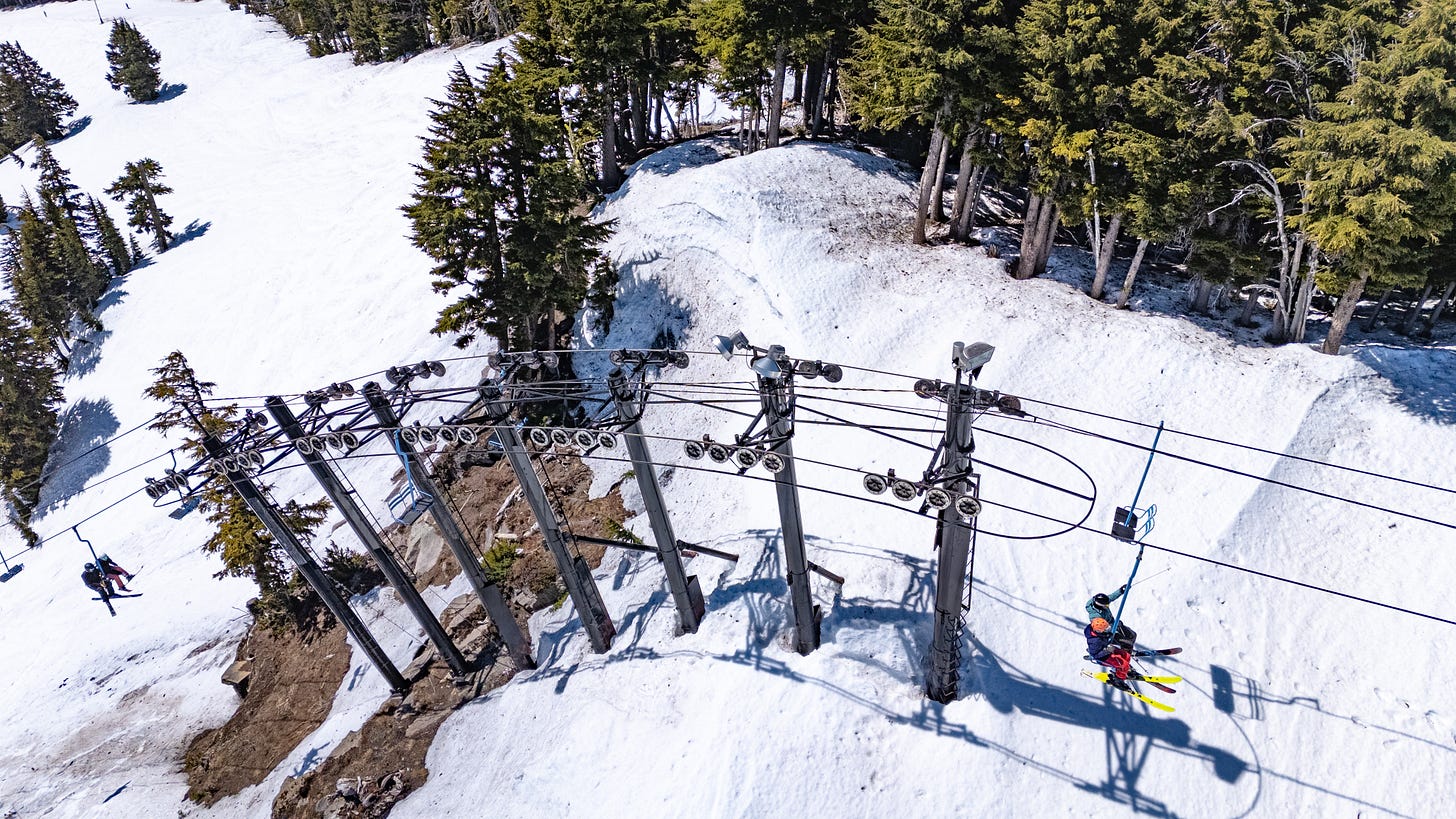
On the Cooper Spur land exchange
Here’s a somewhat-dated and very biased-against-the-ski-area infographic summarizing the proposed land swap between Meadows and the U.S. Forest Service, from the Cooper Spur Wild & Free Coalition, an organization that “first came together in 2002 to fight Mt. Hood Meadows’ plans to develop a sprawling destination resort on the slopes of Mt. Hood near Cooper Spur”:
While I find the sanctimonious language in this timeline off-putting, I’m more sympathetic to Enviro Bro here than I was with the eruption-detection controversy discussed up top. Opposing small-footprint, high-impact catastrophe-monitoring equipment on an active volcano to save five bushes but potentially endanger millions of human lives is foolish. But checking sprawling wilderness development by identifying smaller parcels adjacent to already-disturbed lands as alternative sites for denser, hopefully walkable, hopefully mixed-use projects is exactly the sort of thing that every mountain community ought to prioritize.
On the combination of Summit and Timberline Lodge
The small Summit Pass ski area in Government Camp operated as an independent entity from its 1927 founding until Timberline Lodge purchased the ski area in 2018. In 2021, the owners connected the two – at least in one direction. Skiers can move 4,540 vertical feet from the top of Timberline’s Palmer chair to the base of Summit. While Palmer tends to open late in the season and Summit tends to close early, and while skiers will have to ride shuttles back up to the Timberline lifts until the resort builds a much anticipated gondola connecting the full height, this is technically America’s largest lift-served vertical drop.
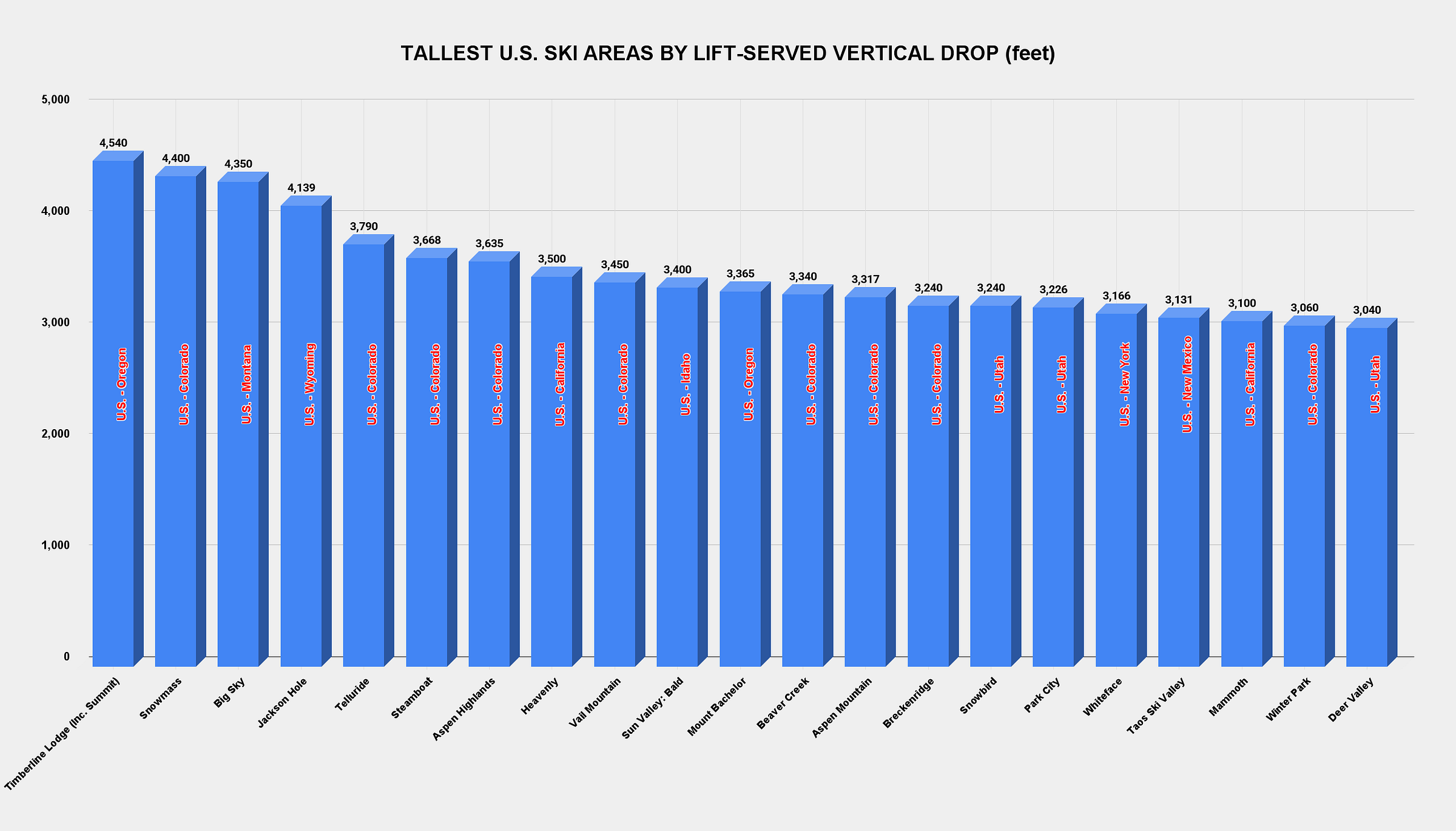
On Meadows’ reciprocals
Meadows only has three season pass reciprocal partners, but they’re all aspirational spots that passholders would actually travel for: Baker, Schweitzer, and Whitefish. I ask Pack why he continues to offer these exchanges even as larger ski areas such as Brundage and Tamarack move away from them. One bit of context I neglected to include, however, is that neighboring Timberline Lodge and Mount Hood Skibowl not only offer a joint pass, but are longtime members of Powder Alliance, which is an incredible regional reciprocal pass that’s free for passholders at any of these mountains:
On Ski Broadmoor, Colorado
Colorado Springs is less convenient to skiing than the name implies – skiers are driving a couple of hours, minimum, to access Monarch or the Summit County ski areas. So I was surprised, when I looked up Pack’s original home mountain of Ski Broadmoor, to see that it sat on the city’s outskirts:
This was never a big ski area, with 600 vertical feet served by an “America The Beautiful Lift” that sounds as though it was named by Donald Trump:
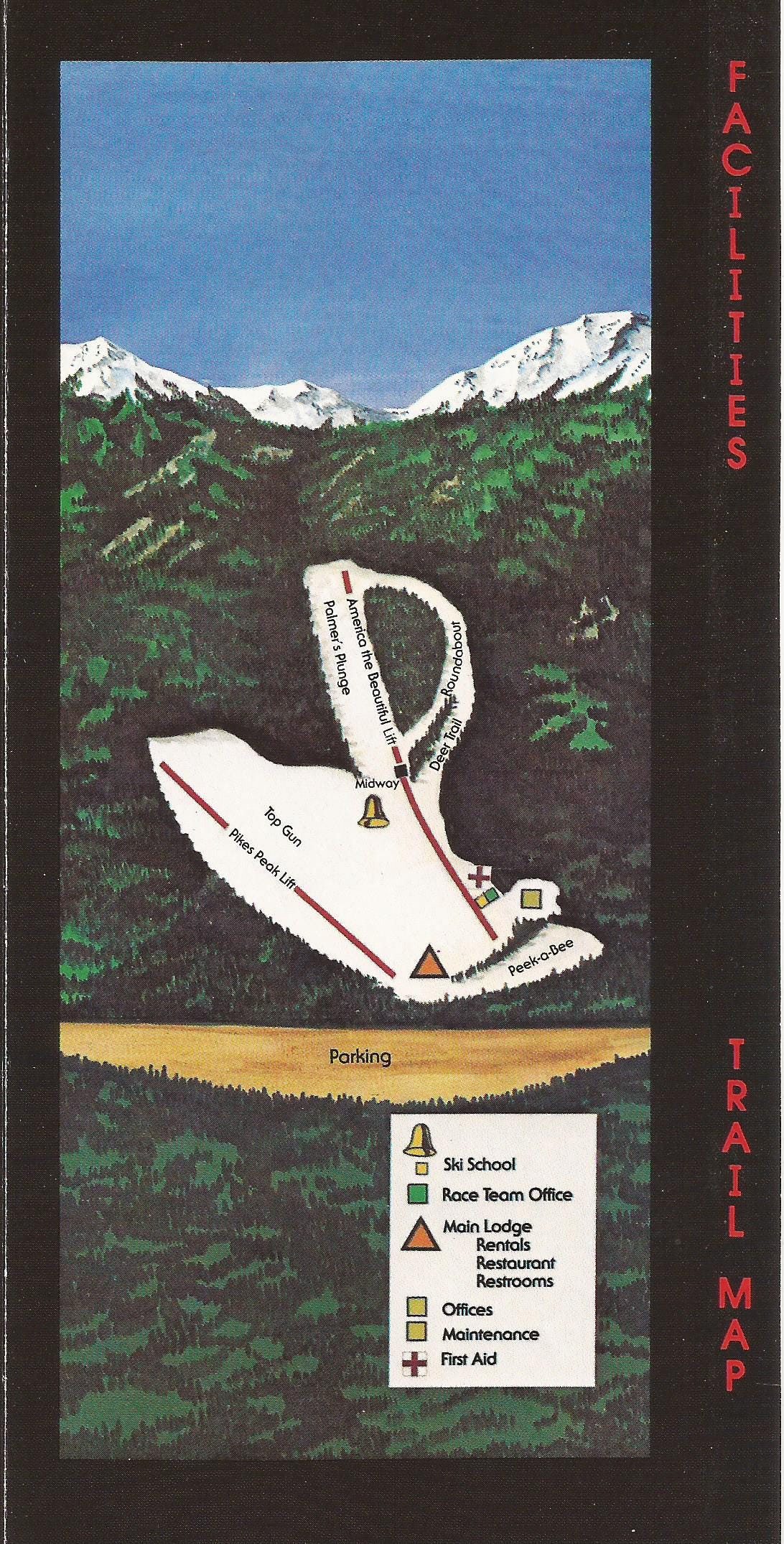
The “famous” Broadmoor Hotel built and operated the ski area, according to Colorado Ski History. They sold the hotel in 1986 to the city, which promptly sold it to Vail Associates (now Vail Resorts), in 1988. Vail closed the ski area in 1991 – the only mountain they ever surrendered on. I’ll update all my charts and such to reflect this soon.
On pre-high-speed Keystone
It’s kind of amazing that Keystone, which now spins seven high-speed chairlifts, didn’t install its first detachable until 1990, nearly a decade after neighboring Breckenridge installed the world’s first, in 1981. As with many resorts that have aggressively modernized, this means that Keystone once ran more chairlifts than it does today. When Pack started his ski career at the mountain in 1989, Keystone ran 10 frontside aerial lifts (8 doubles, 1 triple, 1 gondola) compared to just six today (2 doubles, 2 sixers, a high-speed quad, and a higher-capacity gondy).
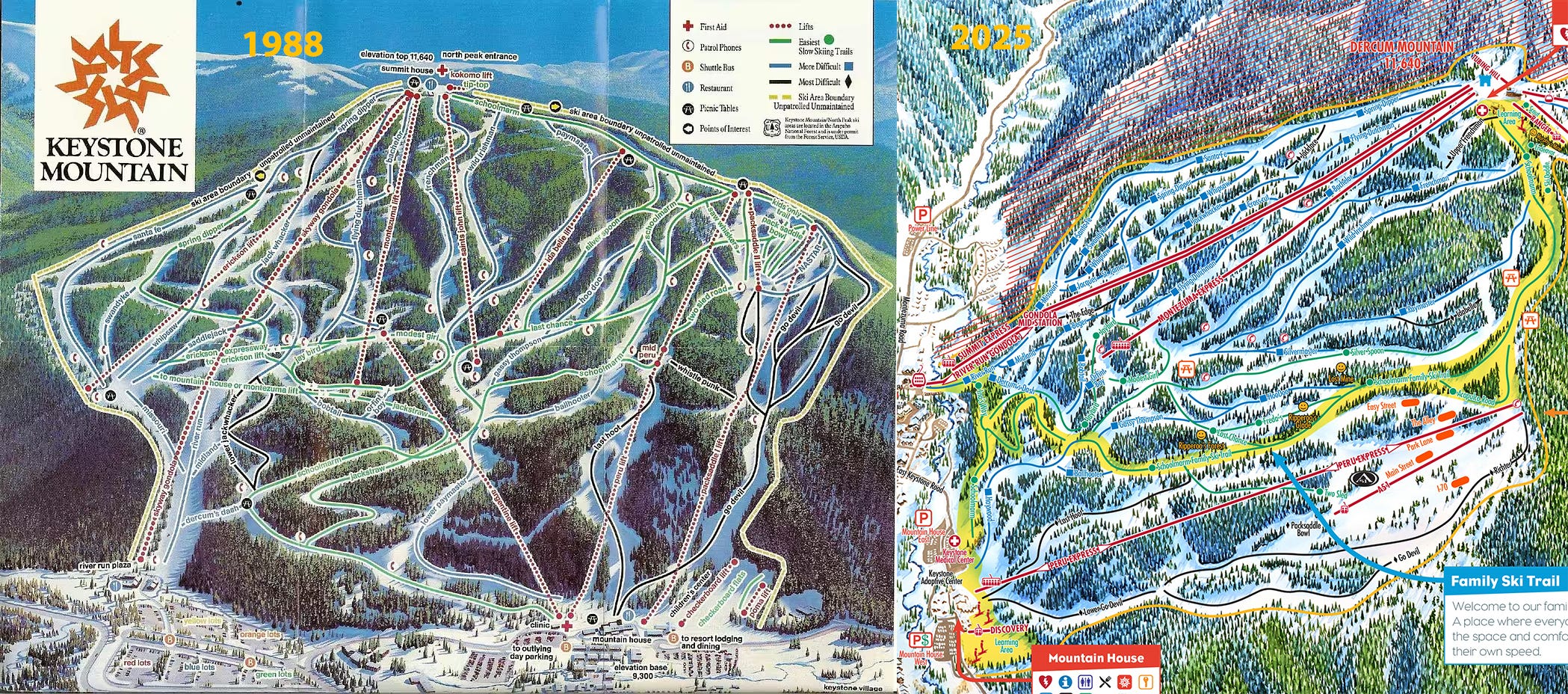
On Mountain Creek
I’ve talked about the bananas-ness of Mountain Creek many times. I love this unhinged New Jersey bump in the same way I loved my crazy late uncle who would get wasted at the Bay City fireworks and yell at people driving Toyotas to “Buy American!” (This was the ‘80s in Michigan, dudes. I don’t know what to tell you. The auto industry was falling apart and everybody was tripping, especially dudes who worked in – or, in my uncle’s case, adjacent to (steel) – the auto industry.)
In Defense of Mountain Creek
It’s in Jersey, first of all, that crease of bland sprawling chainstrips and shipyards and chemical industry tucked between ever-beating Manhattan and the vast treed infinity to the west, the East Coast’s version of flyover country, a noplace you must drive through on your way from New York City to anywhere south or west. To the extent that anyone outsi…
On Intrawest
One of the reasons I did this insane timeline project was so that I would no longer have to sink 30 minutes into Google every time someone said the word “Intrawest.” The timeline was a pain in the ass, but worth it, because now whenever I think “wait exactly what did Intrawest own and when?” I can just say “oh yeah I already did that here you go”:
On Moonlight Basin and merging with Big Sky
It’s kind of weird how many now-united ski areas started out as separate operations: Beaver Creek and Arrowhead (merged 1997), Canyons and Park City (2014), Whistler and Blackcomb (1997), Alpine Meadows and Squaw Valley (connected via gondola in 2022), Carinthia and Mount Snow (1986), Sugarbush and Mount Ellen (connected via chairlift in 1995). Sometimes – Beaver Creek, Mount Snow – the terrain and culture mergers are seamless. Other times – Alpine and the Palisades side of what is now Palisades Tahoe – the connection feels like opening a store that sells four-wheelers and 74-piece high-end dinnerware sets. Like, these things don’t go together, Man. But when Big Sky absorbed Moonlight Basin and Spanish Peaks in 2013, everyone immediately forgot that it was ever any different. This suggests that Big Sky’s 2032 Yellowstone Club acquisition will be seamless.*
*Kidding, Brah. Maybe.
On Lehman Brothers
Nearly two decades later, it’s still astonishing how quickly Lehman Brothers, in business for 158 years, collapsed in 2008.
On the “mutiny” at Telluride
Every now and then, a reader will ask the very reasonable question about why I never pay any attention to Telluride, one of America’s great ski resorts, and one that Pack once led. Mostly it’s because management is unstable, making long-term skier experience stories of the sort I mostly focus on hard to tell. And management is mostly unstable because the resort’s owner is, by all accounts, willful and boorish and sort of unhinged. Blevins, in The Colorado Sun’s “Outsider” newsletter earlier this week:
A few months ago, locals in Telluride and Mountain Village began publicly blasting the resort’s owner, a rare revolt by a community that has grown weary of the erratic Chuck Horning.
For years, residents around the resort had quietly lamented the antics and decisions of the temperamental Horning, the 81-year-old California real estate investor who acquired Telluride Ski & Golf Resort in 2004. It’s the only resort Horning has ever owned and over the last 21 years, he has fired several veteran ski area executives — including, earlier this year, his son, Chad.
Now, unnamed locals have launched a website, publicly detailing the resort owner’s messy management of the Telluride ski area and other businesses across the country.
“For years, Chuck Horning has caused harm to us all, both individually and collectively,” reads the opening paragraph of ChuckChuck.ski — which originated when a Telluride councilman in March said that it was “time to chuck Chuck.” “The community deserves something better. For years, we’ve whispered about the stories, the incidents, the poor decisions we’ve witnessed. Those stories should no longer be kept secret from everyone that relies on our ski resort for our wellbeing.”
The chuckchuck.ski site drags skeletons out of Horning’s closet. There are a lot of skeletons in there. The website details a long history of lawsuits across the country accusing Horning and the Newport Federal Financial investment firm he founded in 1970 of fraud.
It’s a pretty amazing site.
On Bogus Basin
I was surprised that ostensibly for-profit Meadows regularly re-invests 100 percent of profits into the ski area. Such a model is more typical for explicitly nonprofit outfits such as Bogus Basin, Idaho. Longtime GM Brad Wilson outlined how that ski area functions a few years back:



